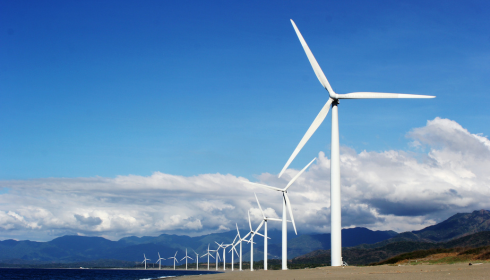In today’s era of renewable energy, wind turbine technology stands out as one of the most efficient and sustainable solutions to meet global electricity needs. As concerns about climate change and depleting fossil fuels grow, countries worldwide are investing in wind energy as a cleaner and greener alternative. A wind turbine transforms the kinetic energy from wind into mechanical power, which can then be converted into electricity. This article delves into how wind turbines work, their types, benefits, and their rising significance in shaping the future of energy.
How Does a Wind Turbine Work?
A wind turbine operates on a simple principle: when the wind blows, it moves the blades of the turbine. These blades are connected to a rotor, which in turn is attached to a shaft. As the rotor spins, it drives a generator that produces electricity. This process is clean, renewable, and produces zero greenhouse gas emissions during operation.
The amount of electricity a wind turbine can produce depends on the wind speed, blade size, and turbine height. Typically, the higher the turbine, the stronger and more consistent the wind, leading to higher energy production.
Types of Wind Turbines
There are two main types of wind turbines based on their axis of rotation:
- Horizontal Axis Wind Turbines (HAWTs): These are the most common type and resemble a traditional windmill with blades rotating around a horizontal axis. They are typically used in wind farms and can be seen dotting landscapes across Europe, North America, and Asia.
- Vertical Axis Wind Turbines (VAWTs): These turbines have blades that rotate around a vertical axis. While less common, they are ideal for urban and residential environments due to their compact design and ability to capture wind from all directions.
Each type has its specific use cases, depending on the location, available space, and wind conditions.
Benefits of Wind Turbines
One of the most compelling advantages of wind turbines is their environmental friendliness. Wind energy is renewable, meaning it does not deplete natural resources or produce harmful emissions. Here are some key benefits:
- Clean Energy Source: Wind power reduces reliance on fossil fuels, helping to cut down air pollution and combat climate change.
- Cost-Effective: After the initial setup, the operational and maintenance costs are relatively low. Wind energy prices have dropped significantly over the last decade, making it one of the cheapest sources of electricity in many regions.
- Job Creation: The wind energy sector provides employment opportunities in manufacturing, installation, maintenance, and support services.
- Energy Independence: By investing in wind power, countries can reduce their dependence on imported fuels and enhance energy security.
Challenges and Solutions
Despite its many advantages, wind energy does face challenges. Wind is an intermittent resource—it doesn’t blow all the time. This variability can affect the stability of power grids. However, advancements in battery storage and hybrid renewable systems are helping overcome this issue.
Another concern is the visual and noise impact on nearby residents. Proper site selection and newer, quieter turbine designs are minimizing these problems. Additionally, ongoing research is improving turbine efficiency and reducing environmental impact, such as threats to bird and bat populations.
The Future of Wind Energy
The global push toward carbon neutrality is fueling unprecedented growth in the wind energy sector. Offshore wind farms, in particular, are gaining popularity due to stronger and more consistent wind speeds over oceans. These projects can generate massive amounts of electricity without occupying valuable land space.



